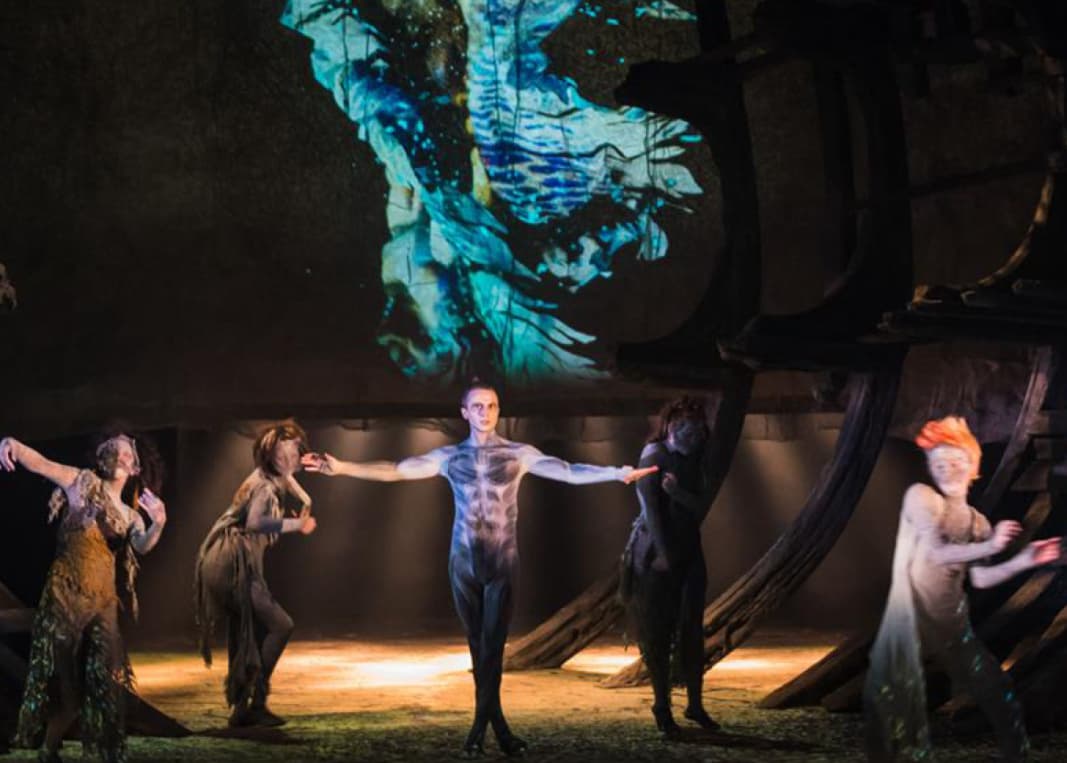Magic and Mystery in The Tempest
“The Tempest” show refers to performances of William Shakespeare’s final play, a masterful blend of magic, betrayal, love, and forgiveness set on a remote island. Through its rich characters and intricate plot, “The Tempest” has fascinated audiences and performers alike since its first performance in the early 17th century. The play, often regarded as one of Shakespeare’s most enchanting and thought-provoking works, continues to be a popular choice for theatrical productions, offering a profound exploration of the human spirit, the power of nature, and the possibility of redemption.
The Enchanted Island: Setting and Story
At the heart of “The Tempest” is the story of Prospero, the rightful Duke of Milan, who has been stranded on an island for twelve years with his daughter Miranda, after being usurped by his brother Antonio. Using his mastery of magic, Prospero conjures a storm—the titular tempest—to shipwreck his usurping brother and others on the island. What unfolds is a tale of intrigue, romance, and supernatural intervention, as Prospero seeks to restore his daughter to her rightful place, exact vengeance on his foes, and ultimately find forgiveness and redemption.
Characters of Power and Transformation
“The Tempest,” Shakespeare’s masterpiece, intricately weaves a tapestry of themes such as power, redemption, and the thin line between civilization and barbarism. At the heart of the narrative is Prospero, the deposed Duke of Milan, who uses sorcery to reclaim his position, highlighting the ambiguous nature of justice and the corrupting influence of power. His daughter Miranda, embodying innocence and compassion, offers a stark contrast to the political machinations around her, representing hope and the potential for human goodness.
- Prospero: Once the Duke of Milan, Prospero finds himself and his daughter Miranda exiled on a mystical island. Here, he becomes a powerful sorcerer, manipulating events and characters to achieve his ends. His journey from a vengeful magician to a forgiving father figure underscores the play’s exploration of reconciliation and the letting go of past grievances;
- Miranda: Prospero’s daughter, who has grown up on the island, knows little of the world or her own history. Her innocence and purity are central to the play’s thematic exploration of human nature and the potential for goodness within. Her encounter with Ferdinand, the son of Prospero’s enemy, sparks a love story that symbolizes hope and the uniting power of love;
- Ariel: A spirit of the air, Ariel is bound to serve Prospero, executing his magical bidding in pursuit of his freedom. Ariel’s loyalty and desire for liberty highlight the themes of servitude and autonomy. The character also serves as a contrast to Caliban, with Ariel’s graceful obedience juxtaposed against Caliban’s rebellious nature;
- Caliban: The son of a witch, Caliban is the island’s original inhabitant and embodies the wild, untamed forces of nature. His resentment towards Prospero’s rule and his attempts to regain control of the island delve into themes of colonialism, resistance, and the inherent dignity of the individual, regardless of their appearance or lineage;
- Ferdinand: The son of Alonso, the King of Naples, Ferdinand’s shipwreck on the island and subsequent love affair with Miranda serves as a catalyst for Prospero’s redemption and the eventual reconciliation between the play’s various factions. His character represents the innocence and purity of young love, uncorrupted by the politics and power struggles of the older generation.
“The Tempest” thus stands as a profound commentary on the complexities of the human condition, exploring the darkness and light within each individual and the transformative power of forgiveness and understanding. Through its vivid characters and magical setting, the play challenges the audience to reflect on themes of freedom, the nature of authority, and the capacity for change within every person.
Themes of Magic, Manipulation, and Morality
Magic is a central theme of “The Tempest,” serving as a tool for both enlightenment and entrapment. Prospero’s use of magic to manipulate events and characters raises questions about power and its ethical use. The play delves into the morality of revenge versus the strength of forgiveness, challenging characters and audiences alike to consider the path to true power and liberation.
A Spectacle of Theatrical Brilliance
Productions of “The Tempest” often emphasize the play’s dramatic visual and auditory elements, from the storm that opens the narrative to the enchanting spells cast by Prospero. Theatrical interpretations range from traditional stagings that highlight the play’s Elizabethan roots to modern adaptations that explore contemporary themes and settings. Regardless of the approach, “The Tempest” remains a showcase of theatrical creativity and innovation.
Legacy and Enduring Appeal
“The Tempest” continues to captivate and inspire, not just as a piece of literature but as a living, breathing work of theater that speaks to the enduring complexities of the human condition. Its themes of reconciliation, the pursuit of justice, and the transformative power of love and forgiveness resonate across ages, making “The Tempest” a timeless classic that remains relevant and powerful in contemporary society.
Conclusion: A Journey of Discovery and Redemption
“The Tempest” show is more than just a performance; it is a journey into the depths of the human soul, exploring the darkness and light that coexist within us all. Through its magical narrative, Shakespeare invites audiences to confront their own tempests, seeking not just to entertain but to enlighten, offering a path to redemption that is as relevant today as it was in the 17th century.
